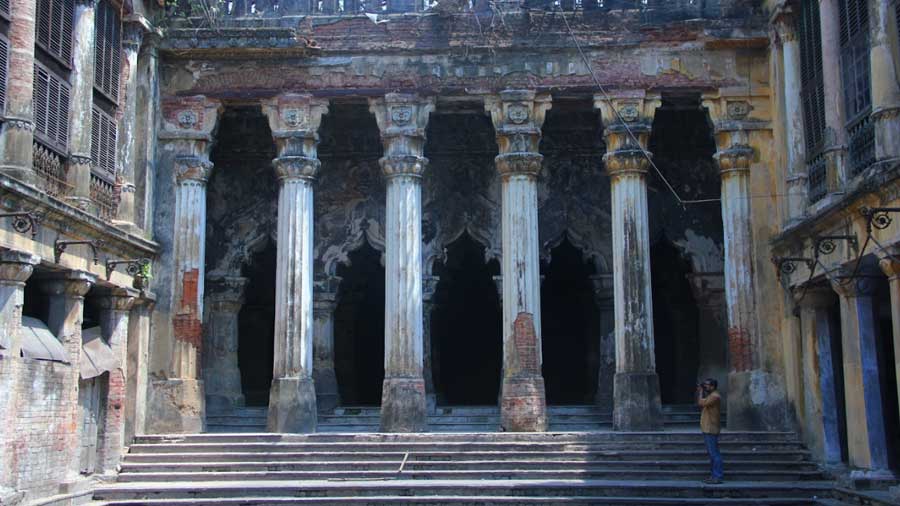Standing in front of the colossal and dilapidated Basu Bati mansion, located in a dingy part of Bagbazar Street, a feeling of disconsolation instantly overcomes the mind. Here is a mansion that was a hub for Bengali intellectuals in the early 19th century – but is now unfortunately more famous as a shooting location for dark and supernatural-themed films. Apart from being renowned for the remarkable individuals who visited this house, the mansion was also noteworthy for its unique architecture.
Of the original 16 immense Doric columns with stucco lions’ heads outside the mansion, only four remain. The rest has been renovated, but rather distastefully. As one enters the main courtyard of the house, a thakurdalan with six massive fluted Doric columns creating five archways comes into the view. From the courtyard, one can see five more archways beyond the pillars, which lead to the inner sanctum.
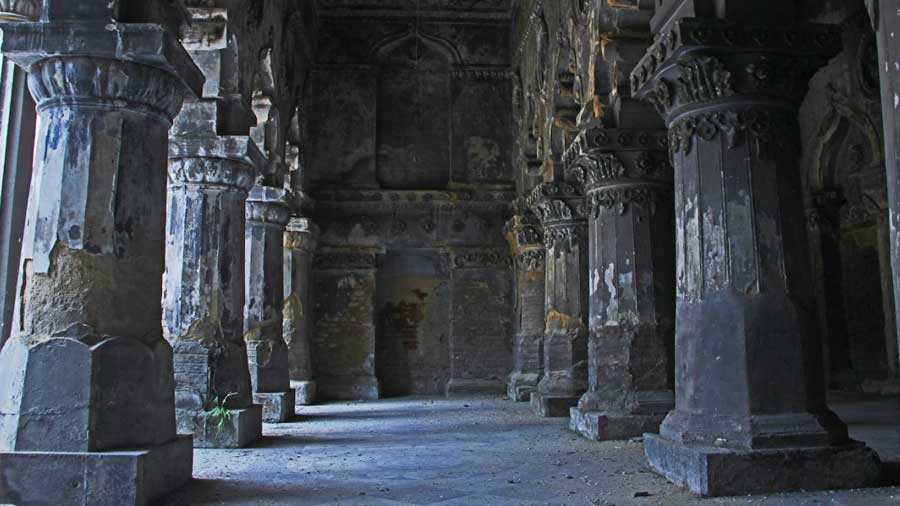
The interior of the ‘thakurdalan’ Amitabha Gupta
The inner walls and pillars have several design elements featuring Hindu gods and goddesses. There also used to be beautiful Kalighat paintings on the entire top portion. Facing the thakurdalan, on either side of the courtyard, are long pillared corridors on both floors. The top corridors have window shades.
But the structure is crumbling and entering it has potential risks. Most of the central area of the mansion is not approachable. The rooms beside the long corridor of the ground floor are all shut. The stairs leading to the top floor look dangerous. Some of the decorated iron banisters are missing. The two main rooms, corridors and balconies of the first floor have no maintenance and is covered in dust and rubble.
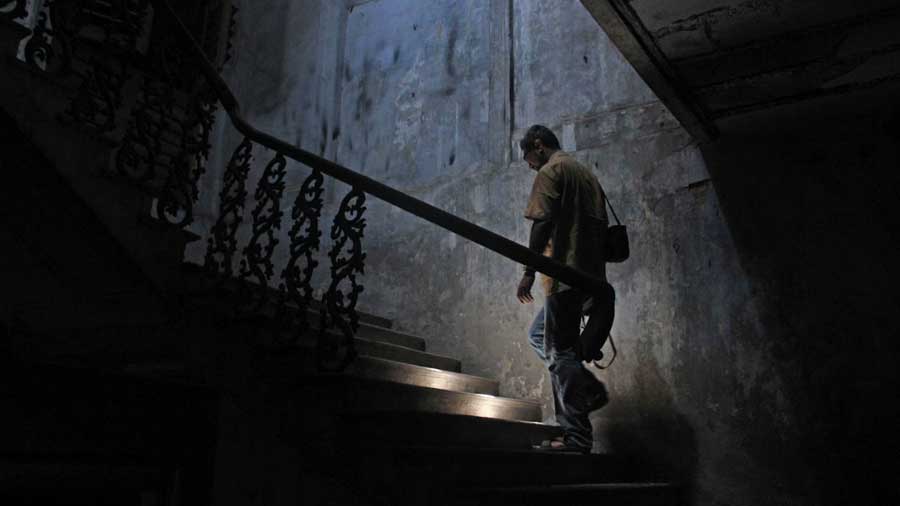
The stairs leading to the top floor Amitabha Gupta
Certainly, this is not the fate the majestic mansion deserved. Its thakurdalan has witnessed many Durga and Jagadhatri Pujas performed with great pomp and show, and many eminent personalities were regular visitors to this house.
History of Basu Bati
The Basu family of the Kantapukur area of Bagbazar originally came from Deulpur in Howrah. One of the distinguished members of the Kantapukur Basu family was Jagat Chandra, who had two sons – Madhab Chandra and Tarachand. Madhab Chandra had three sons – Mahendranath, Nandalal and Pashupati.

The mansion was built by Nilmani Mitra, the first qualified Bengali civil engineer Amitabha Gupta
The family inherited a large property through the efforts of Mahendranath, who died childless. His brothers – Nandalal and Pashupati Basu built this magnificent mansion. The foundation stone was laid on October 19, 1876, and the family started living in the premises from July 10, 1878.
Nilmani Mitra, the first qualified Bengali civil engineer, designed and built the mansion. He shifted away from the prevalent European-style architecture and took inspiration from Bengali and Islamic styles – using highly decorative murals and reliefs with turquoise and amber paintwork. Hundreds of paintings by artist Bamapada Banerjee adorned the walls of Basu Bati. The house was built with a garden, a private zoo and a stable on an area of around 22 bighas. Now, only the house remains standing – that too, barely.
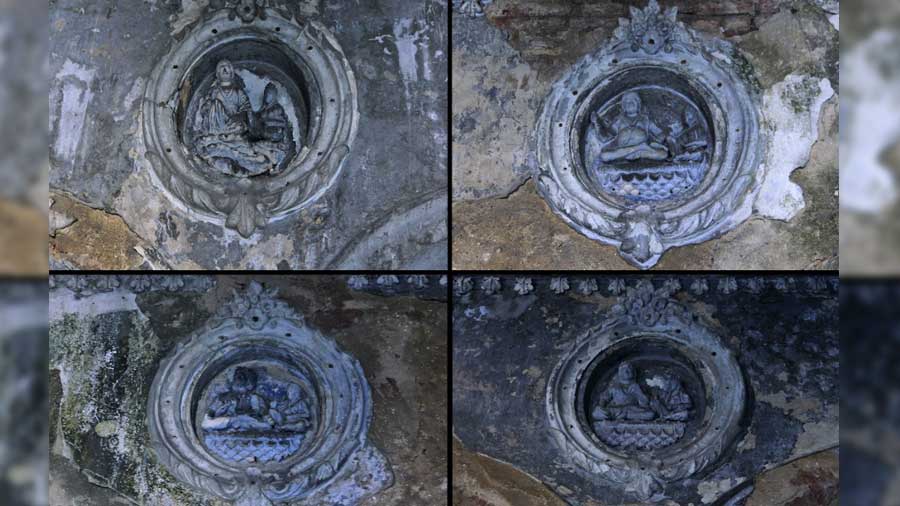
Stucco decorations on the walls Amitabha Gupta
Nandalal Basu was very religious. It was because of him that Ramakrishna Paramhamsa and other spiritual leaders visited this house. Pashupati Basu loved art and theatre, and several playwrights and actors would also visit this mansion. During that period, when Wajid Ali Shah, the last ruler of Awadh, was exiled to Metiaburuz, Girish Chandra Ghosh staged his drama Pandav Gaurav (Glory of the Pandavas) at this house for the Nawab.
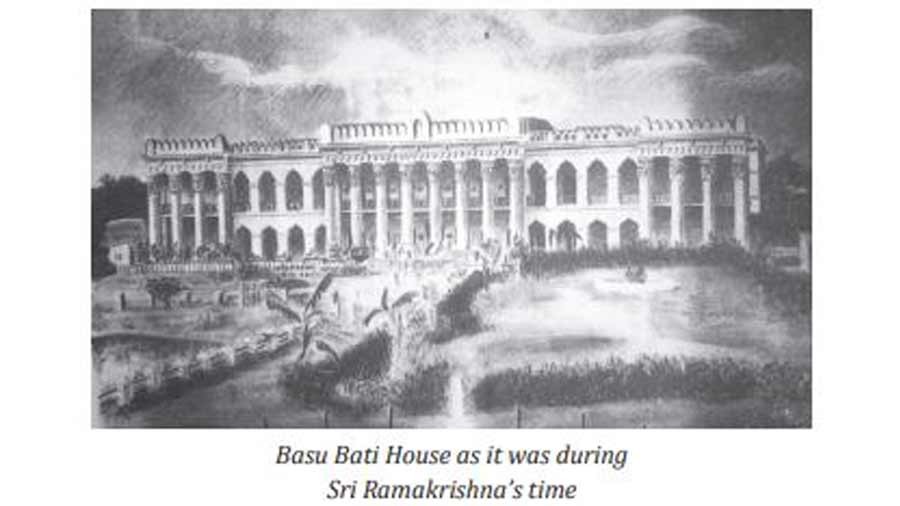
The house had a garden, a private zoo and a stable on an area of around 22 bighas sriramakrishna.in
The Basu family was very patriotic too. Anti-British meetings and rallies were regularly held here. Apart from the presence of personalities like Surendra Nath Banerjee, who gave lectures here, conferences were held in the adjoining lawn during the Bengal Partition Movement – protesting the 1905 partition of Bengal by Lord Curzon. A national fund was formed in this house in protest of the Partition in the presence of Rabindranath Tagore. The poet held a mass “Raksha Bandhan” ceremony here. A plaque can be seen besides the entrance commemorating the event.

A plaque mentioning the formation of a national fund at Basu Bati in the presence of Rabindranath Tagore Amitabha Gupta
Like with many other such mansions, the post-Independence maintenance of such a colossal property became difficult with the abolition of the zamindari system. Besides that, to clear their debts, descendants of Pashupati Nath had to hand over the eastern half of the mansion to the West Bengal government in 1956, and the house was spilt. While the western half remained in possession of the descendants of Nandalal Basu, on the other portion, a state library came up under the aegis of the Department of Higher Education.
In 2007-08, there was an ambitious plan to build a heritage hotel here after Ambuja Realty took possession of the portion belonging to Nandalal after negotiations with his descendant Amit Basu. This included the thakurdalan and courtyard too.
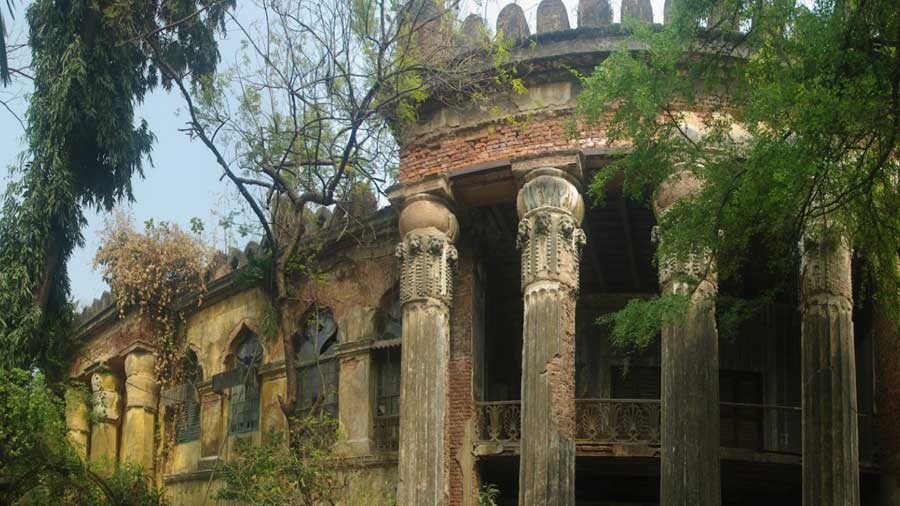
Film and television shootings take place here occasionally Amitabha Gupta
However, nothing has yet progressed due to several legal and logistical complications. The mansion usually lies deserted, barring some security guards. Occasionally, film and television shootings take place here. But with each passing day, the grand mansion is heading towards its inevitable and ignominious end – the same fate as many glorious mansions of Bengal. But till then, Basu Bati will remain as it is – staring helplessly at the custodians of heritage in the city.
*The owners inform that in recent times, a big chunk of the ceiling has fallen, making the place even more unsafe. Hence, they are not allowing visitors inside.
Amitabha Gupta is a travel writer and a photographer who specializes in heritage and history of West Bengal. His work has been featured in many magazines and newspapers — both online and offline. He also conducts heritage walks and tours in and around Kolkata.
